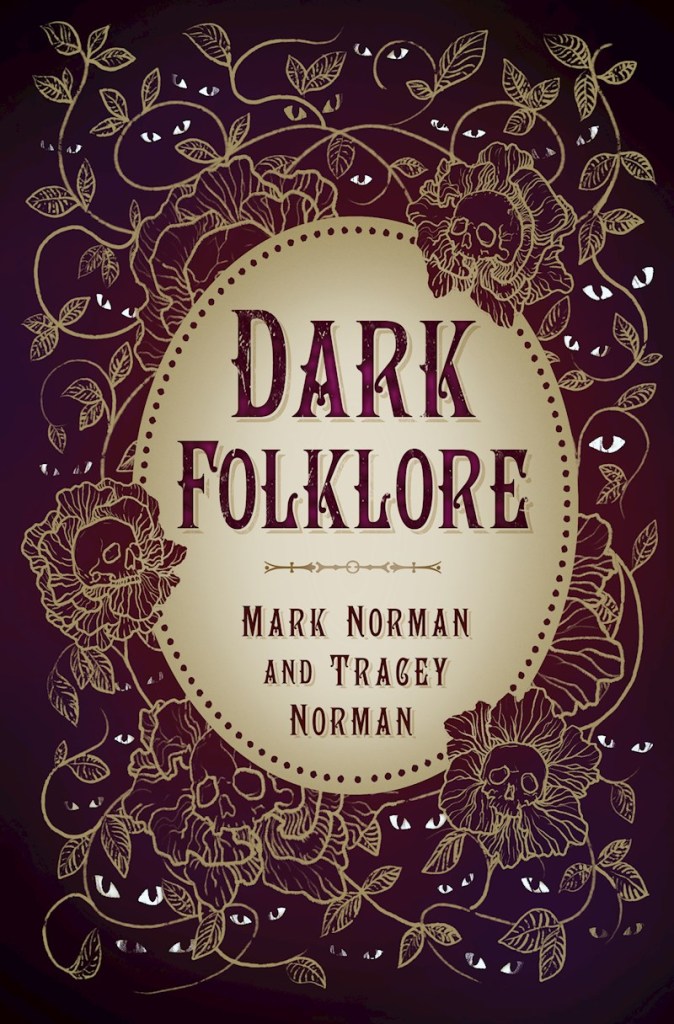
Upon hearing of the release of Dark Folklore by Mark and Tracey Norman, I was beguiled as to what Chthonic treasures the book would contain, for there is certainly darkness a ‘plenty to be found within the world of folklore. Upon opening the book and casting my eyes over the contents listing of the 5 chapters offering a bewitching array of lore with Fortean interest, the first chapter The Old Hag: Folklore and Sleep Paralysis was of particular personal intrigue to me, having experienced numerous incidents of this bizarre state myself. The Normans provide a very good overview on the subject covering the bases of superstition, psychoanalysis and scientific rationale. Presented are numerous entities associated to the Hag-riding phenomenon aspects of sleep disturbance in world folklore, from the Hungarian Liderc to the Arabian Quarinah and the Alien Greys. The authors put forward balanced and insightful consideration of the subject, without judgement. They explain the medical processes of such unsettling experiences but don’t merely dismiss the entities envisioned rather questioning why a feeling of somnolent physical inertia and laboured breathing (amongst other symptoms) can result in visions of old crones or other strange entities squatting on the sufferers’ chests or dark mysterious figures lingering in the corners of the room. Archetypal consideration is applied here, as is the rich folklore of myriad nocturnal entities that can be found across the world in both developing and more technologically advanced societies. (An unsettling folkloric belief, not mentioned within this book, was told to me by a Filipina associate who claimed that the Batibat, an entity associated to the strange hypnagogic / hypnopompic episodes is believed in her culture to be the ghost of someone who had died in their sleep).
Chapter two deals with The Dark Church and covers wide-reaching examples of association mostly between the Christian church in Britain and superstition and pagan influence. Discussed are foliate head and Sheela-na-gig carvings, St. Mark Eve vigils (whereby observers may see a procession of those destined to die in the following year and other wondrous delights. Here we wander down corpse roads and meet the priests of Devon who reputedly employed rather than denied folk magic. The magician-priests included Reverend Franke Parker who lore declares had the power to shape-shift and had an esoteric library that he was deeply protective of. The peculiar Parson Parker was reportedly once found at rest in a bed surrounded by dead toads.
Folk Ghosts provide the focus of the third chapter and considers the distinction that should be made more in haunt studies between ghosts that exist purely in lore and those reported to have been experienced by verifiable witnesses. Many places are said to be haunted by a phantom stagecoach or phantom black dog for instance, but how many have known contemporary witnesses of the particular phenomenon? ‘Cockstride ghosts’ – the spirits of those destined to perform some impossible or potentially eternal penance for an earthly crime are also given good attention. Weaving rope from grains of sand or emptying large pools with a leaking diminutive vessel are examples of such posthumous burdens that may befall wicked souls.
Following on in Chapter four we are entertained with Urban Legends and contemplation of their history, endurance and evolution from the era of Spring-Heeled Jack through the Edwardian case of the Cottingley Fairy photographs, to the radio and televisual panics of the broadcasts of War of The Worlds and Ghostwatch to the virtual ‘fakelore’ creations taking on a real-world presence and influence in the digital-age such as Slender Man and the Momo Challenge, perfectly showing that folklore is not simply a historical study but a living, developing part of human culture.
Dark Tourism and Legend Tripping provide the basis of the fifth and final chapter. Here, Mark and Tracey turn tour-guide and lead us to some intriguing and odd international locations and contemplate why people may be drawn to visit places of grisly repute, to witness rituals alien to their own cultures or to even re-enact certain strange historical happenings. Included here are Aokighara – the notorious ‘suicide forest’ of Japan, the Black Mausoleum of Edinburgh’s Greyfriars cemetery which bears reported activity by the Mackenzie poltergeist and the ghost tours of the Ararat Lunatic Asylum in Australia. Also covered are the death rites and rituals such as the Torajan Ma’nene funerary customs in South Sulawesi, Indonesia and the Día de los Muertos (Day of the Dead) celebrations in Mexico. Quite a lot of lore is surprisingly covered within this relatively thin and rather charming, attractively presented book. Subjects however are frequently given a satisfying amount of considered attention rather than being skimmed over but other examples are mentioned in passing which can whet the reader’s appetite for further research. The allocation of five chapters also works well here, giving the book a tighter focus whilst still treading a lot of ground and providing plenty of scope for possible further volumes in the series, which personally I’d be keen to read.
Dark Folklore
Mark Norman & Tracey Norman http://www.thefolklorepodcast.com/
The History Press (2021)
Hb. 174 pp.
ISBN 9780750998
https://www.thehistorypress.co.uk/publication/dark-folklore/9780750998017/

Review by Andy Paciorek. First Published in Fortean Times magazine